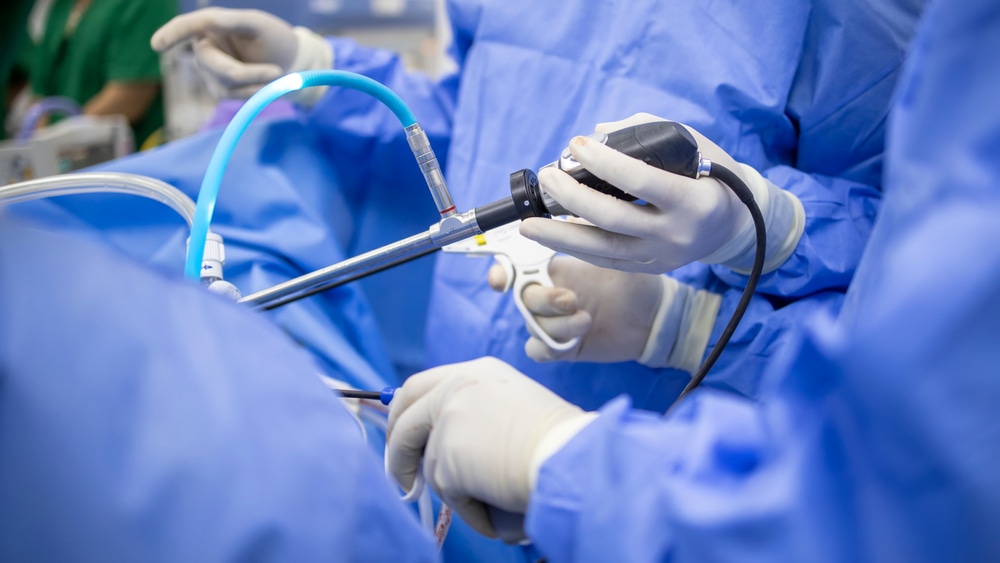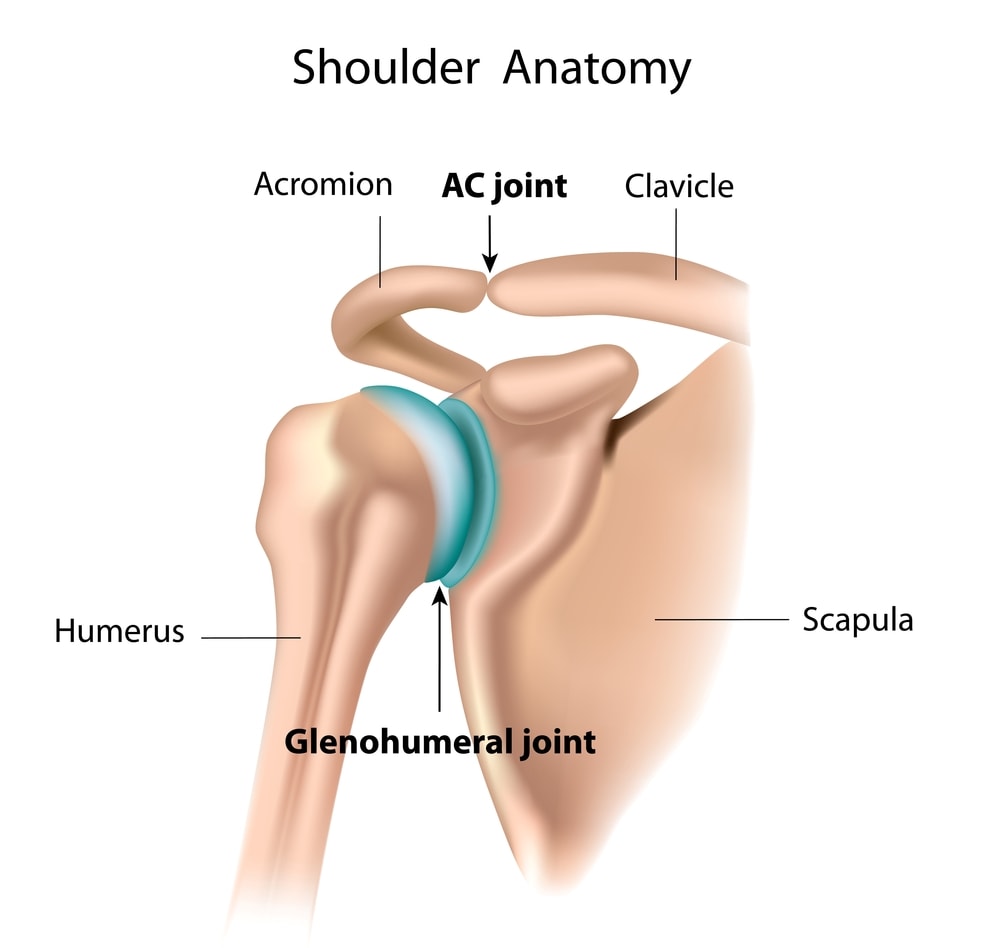Another One Bites the Dust: Surgery for AC Separation

Credit: Shutterstock
There isn’t a month that goes by that if you’re looking, yet another orthopedic surgery sacred cow bites the dust. This one involving AC separation for me is personal. Let dive in.
What Is the AC Joint?

Credit: Shutterstock
AC stands for Acromioclavicular. This is the joint between the clavicle (collar bone) and the front extension of the shoulder blade known as the Acromion. It’s a place where stresses from the shoulder and upper extremity can get transferred to the chest wall and ultimately the spine.
What Is an AC Separation?

Credit: Shutterstock
The AC joint is held together by strong ligaments and these allow the collar bone to move while keeping it approximated to the shoulder blade. These ligaments can get damaged in trauma and the joint can become “separated”. For example, note the above shoulder x-ray. The green circle on the right shows a normal gap between the collar bone and Acromion. The red circle on the left shows a larger than usual gap which means that AC joint is separated.
This one is personal for me as way back in medical school I went down on a motorcycle and separated my left AC joint. I chose not to get surgery and so I’m glad to see this new randomized controlled trial.
The Latest Surgical Sacred Cow Bites the Dust Paper
When patients have larger AC separations like grade 3 or 4, orthopedic surgeons often recommend that the patient get a surgical repair. This often involves a device that’s implanted to correct the separation and act as an artificial ligament. Like many orthopedic surgeries, while we have studies that show that one procedure may be better than the other, we have very few asking the most critical question. Is this shoulder procedure better than just doing nothing?
The new study is out of UK and took 60 young patients aged 16-35 years of age who had a grade 3 or 4 AC separation and randomized them to receive surgical repair versus or no surgery (1). One year after surgery, there was no difference in outcome between the groups.
What Else Can Be Done?
I’ve treated a number of these patients through the years with precise ultrasound-guided injections of platelet-rich plasma or bone marrow concentrate into the damaged ligaments. Some of these have been grade 3 or 4 bigger separations and they have also done well. I’ve also had my AC separation injected by my colleagues and it’s still doing well, some 30+ years later.
The upshot? All orthopedic surgeries must be researched against placebo, sham, or conservative care. There should be NO exceptions. Despite this mandate, few have been. When they are, based on what I have observed, they generally tend not to work.
____________________________________
(1) Murray IR, Robinson PG, Goudie EB, Duckworth AD, Clark K, Robinson CM. Open Reduction and Tunneled Suspensory Device Fixation Compared with Nonoperative Treatment for Type-III and Type-IV Acromioclavicular Joint Dislocations: The ACORN Prospective, Randomized Controlled Trial. J Bone Joint Surg Am. 2018 Nov 21;100(22):1912-1918. doi: 10.2106/JBJS.18.00412. PMID: 30480595.

NOTE: This blog post provides general information to help the reader better understand regenerative medicine, musculoskeletal health, and related subjects. All content provided in this blog, website, or any linked materials, including text, graphics, images, patient profiles, outcomes, and information, are not intended and should not be considered or used as a substitute for medical advice, diagnosis, or treatment. Please always consult with a professional and certified healthcare provider to discuss if a treatment is right for you.
